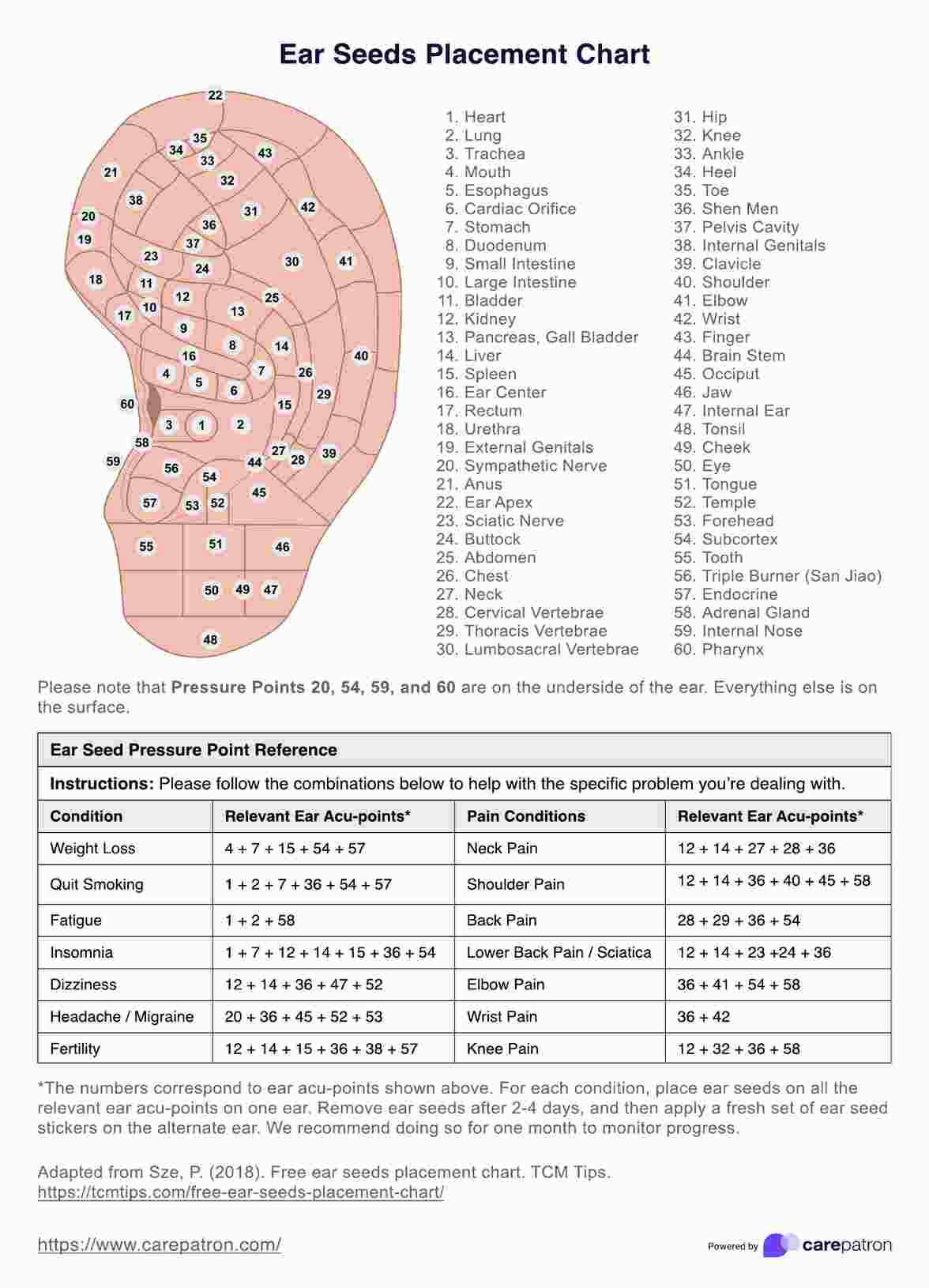Ear seeds can fall off after three to five days. If they don’t, it’s best to wear them for only three to five days, then remove them.

Ear Seeds Placement Chart
Learn what ear seeds are and download our Ear Seeds Placement Chart template!
Use Template
Ear Seeds Placement Chart Template
Commonly asked questions
They come with adhesives or stickers. They will lose their sticking power over time due to moisture.
Most of the time, no. It would be best to consult with a specialist to see if it’s possible, depending on the severity of the infection.
EHR and practice management software
Get started for free
*No credit card required
Free
$0/usd
Unlimited clients
Telehealth
1GB of storage
Client portal text
Automated billing and online payments











